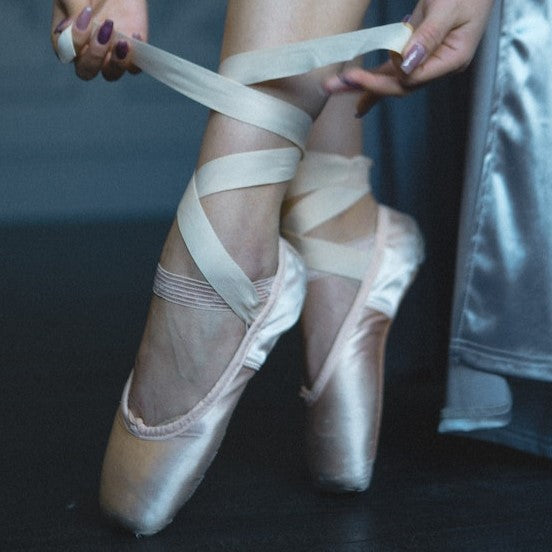Customer Service +65 8044 8419
Popular Products
Shatterproof Framed Mirror on Wheels
- From $659.00
$0.00- From $659.00
- Unit price
- / per
Shatterproof Frameless Mirror on Wheels
- From $729.00
$0.00- From $729.00
- Unit price
- / per
Shatterproof Frameless Hung On Wall Mirror
- From $539.00
$0.00- From $539.00
- Unit price
- / per
Popular Products
Shatterproof Framed Mirror on Wheels
- From $659.00
$0.00- From $659.00
- Unit price
- / per
Shatterproof Frameless Mirror on Wheels
- From $729.00
$0.00- From $729.00
- Unit price
- / per
Shatterproof Frameless Hung On Wall Mirror
- From $539.00
$0.00- From $539.00
- Unit price
- / per
-
 Dancewear
Dancewear
- Dancewear
- Go to Dancewear
-
 Collections
Collections
- Collections
- Go to Collections
-
 New
New
-
 All
All
-
 Gifts
Gifts
-
 Tops
Tops
-
 Leotards
Leotards
- Leotards
- Go to Leotards
-
 Leotards
Leotards
- Unitards
-
 Bottoms
Bottoms
-
 Dresses
Dresses
- Dresses
- Go to Dresses
-
 Dresses
Dresses
-
 Footwear
Footwear
-
 Accessories
Accessories
-
 Dance Styles
Dance Styles
-
 Hair & Makeup
Hair & Makeup
- Hair & Makeup
- Go to Hair & Makeup
- Hair
-
 Makeup
Makeup
- Dance Hair Tips
-
 Tailoring
Tailoring
- Tailoring
- Go to Tailoring
-
 Tailoring Services
Tailoring Services
- Tailoring Services
- Go to Tailoring Services
- Our Tailoring Services
-
Designs Lookbook
- Designs Lookbook
- Go to Designs Lookbook
-
 Design Sketches
Design Sketches
- Design Sketches
- Go to Design Sketches
- All
- Tops
- Leotards
- Bottoms
- One Piece
- Ballet Tutus
- Sewing Class
-
DIY Accessories
- DIY Accessories
- Go to DIY Accessories
- Fabrics
- Rhinestoning
- Sewing Machines
- Sewing Accessories
-
 24/7 Studio
24/7 Studio
-
 Equipments
Equipments
- Equipments
- Go to Equipments
-
 Marley Dance Mats
Marley Dance Mats
-
 Sprung Dance Floor
Sprung Dance Floor
- Sprung Dance Floor
- Go to Sprung Dance Floor
- Limitless Sprung Floor
- Sprung Floor Installation
-
 Soundproof Mats
Soundproof Mats
- Soundproof Mats
- Go to Soundproof Mats
-
 Soundproof Mats
Soundproof Mats
- Soundproof Flooring Installation
-
 Ballet Barres
Ballet Barres
-
 Dance Poles
Dance Poles
-
 Shatterproof Mirrors
Shatterproof Mirrors
-
 Dance Floor Rental
Dance Floor Rental
- Dance Floor Rental
- Go to Dance Floor Rental
- Marley Dance Mat Rental
- Installation
-
 Installation
Installation
-
 Charity
Charity
- Charity
- Go to Charity
- Children with Cancer
Latin Dance
Experience the Passion and Rhythm of Latin Dance
Latin dance encompasses a vibrant and diverse collection of dance styles that originated in Latin America and the Caribbean. Known for its energetic rhythms, expressive movements, and a strong sense of community, Latin dance offers an exciting and joyful experience for dancers of all levels. Whether you want to learn salsa, bachata, merengue, or samba, there's something for everyone in the world of Latin dance. Here's a comprehensive guide to the history of Latin dance, fascinating facts, and how you can start your Latin dance journey with us.
A Brief History of Latin Dance
Latin dance has deep roots in the cultural traditions of Latin America and the Caribbean. It draws from a rich blend of African, European, and Indigenous influences, reflecting the region's diverse heritage. The evolution of Latin dance is closely tied to the development of Latin music, including genres like salsa, merengue, cumbia, bachata, and samba.
The spread of Latin dance began in the early 20th century, as music and dance from Latin America became popular in the United States and Europe. By the 1950s and 1960s, Latin dance styles such as mambo, cha-cha-cha, and salsa gained international recognition, with New York City becoming a hub for Latin dance culture.
Over time, Latin dance continued to evolve, incorporating new rhythms and influences while retaining its energetic spirit. Today, Latin dance is celebrated worldwide, with dance studios, clubs, and festivals dedicated to this vibrant and lively dance form.
Street Latin Dance vs. Competitive Latin Dance
Latin dance is a vibrant and diverse collection of dance styles originating in Latin America and the Caribbean. While the term "Latin dance" encompasses many styles, it's important to understand the distinction between street Latin dance and competitive Latin dance. These two branches of Latin dance differ in terms of context, style, and purpose. Here's a detailed explanation to help you understand their unique characteristics.
Street Latin Dance
Street Latin dance refers to Latin dance styles that are performed in social settings, such as clubs, parties, festivals, and other informal environments. These dances are rooted in the cultural traditions of Latin America and are often associated with social interaction, community, and celebration.
Characteristics of Street Latin Dance
- Social Interaction: Street Latin dances are typically performed with a partner or in groups, emphasizing connection and interaction with others. These dances are designed to be enjoyed in social settings, encouraging a relaxed and fun atmosphere.
- Improvisation: Street Latin dance allows for a high degree of improvisation. Dancers can freestyle and add their personal flair to the movements, creating a more spontaneous and expressive experience.
- Variety of Styles: Street Latin dance includes a wide range of styles, such as salsa, bachata, merengue, cumbia, and cha-cha-cha. Each style has its unique rhythm, steps, and cultural origins.
- Music and Rhythm: Street Latin dance is often performed to live music or recorded tracks with strong rhythms and beats. The music plays a central role in guiding the dance and creating a lively atmosphere.
Popular Street Latin Dance Styles
- Salsa: Known for its energetic footwork and spins, salsa is often danced with a partner and is popular in Latin dance clubs and parties.
- Bachata: A slower and more sensual dance, bachata emphasizes close partner connections and romantic movements.
- Merengue: A simple and upbeat dance, merengue is characterized by its marching rhythm and ease of learning.
- Kizomba: Kizomba is a sensual dance style from Angola that has gained popularity across the globe. It emphasizes close connection between partners and is danced to slow, melodic music with a strong beat. Kizomba's gentle and romantic style makes it a favorite in social dance settings.
Competitive Latin Dance
Competitive Latin dance refers to Latin dance styles that are performed in a formal competition setting. This branch of Latin dance is a part of the ballroom dance community, where dancers are judged on technique, style, and precision. Competitive Latin dance is highly structured and requires rigorous training and discipline.
Characteristics of Competitive Latin Dance
- Structured Technique: Competitive Latin dance follows strict rules and techniques. Dancers must perform specific steps and patterns while maintaining correct posture, alignment, and form.
- Choreography: Unlike street Latin dance, competitive Latin dance relies heavily on choreography. Dancers rehearse set routines and perform them during competitions.
- Judging and Scoring: Competitive Latin dance is judged based on technical skill, musicality, and overall presentation. Dancers compete for scores and rankings in organized competitions.
- Costumes and Presentation: Competitive Latin dancers often wear elaborate costumes that are designed to enhance their movements and overall presentation. This adds to the theatricality of the performances.
Popular Competitive Latin Dance Styles
- Cha-Cha-Cha: A lively dance with a syncopated rhythm, cha-cha-cha is often characterized by sharp movements and intricate footwork.
- Samba: Known for its rhythmic energy and lively footwork, samba is a fast-paced dance often associated with Brazilian Carnival.
- Rumba: A slow and romantic dance, rumba emphasizes sensuality and connection between partners.
- Paso Doble: Inspired by the Spanish bullfight, paso doble is a dramatic dance with powerful and bold movements.
- Jive: A high-energy dance, jive is characterized by its fast tempo and playful, upbeat style.
The Learning Process
Learning Latin dance involves a combination of rhythm, technique, and social interaction. Here's what you can expect when you start your Latin dance journey:
- Group Classes: Group classes offer a fun and social environment to learn Latin dance. You'll be introduced to basic steps, patterns, and partner connections. Group classes often include warm-up exercises, dance routines, and opportunities to dance with different partners.
- Private Lessons: For personalized instruction and focused guidance, private lessons are a great option. You'll work with an experienced Latin dance instructor who can help you refine your technique and develop your unique style. Private lessons are ideal for dancers of all levels, from beginners to advanced practitioners.
- Social Dance Events: Social dance events and parties are a key part of Latin dance culture. Attending these events allows you to practice your skills, meet other dancers, and experience the joy of dancing in a social setting.
- Self-Practices: Having time to self-rehearse in a space in front of a mirror will help you to develop muscle memory over time, essential for enjoying the dance thoroughly!
Reach Out to Us for Private Latin Dance Lessons
At Free Movement Dance Studio, we offer private Latin dance lessons for dancers of all levels. Whether you're new to Latin dance or seeking to refine your skills, our experienced instructors are here to guide you. You can book a private class tailored to your specific needs and preferences.
To schedule a private lesson, simply contact us via phone, email, or our website. We'll work with you to find a convenient time and create a personalized learning plan that suits your goals. Don't hesitate to reach out—we'd be thrilled to help you embark on your Latin dance journey!
Latin dance is a vibrant and joyful dance form that celebrates rhythm, energy, and connection. So put on your dancing shoes, step onto the dance floor, and let the music move you. The world of Latin dance is waiting for you!
- Choosing a selection results in a full page refresh.



































